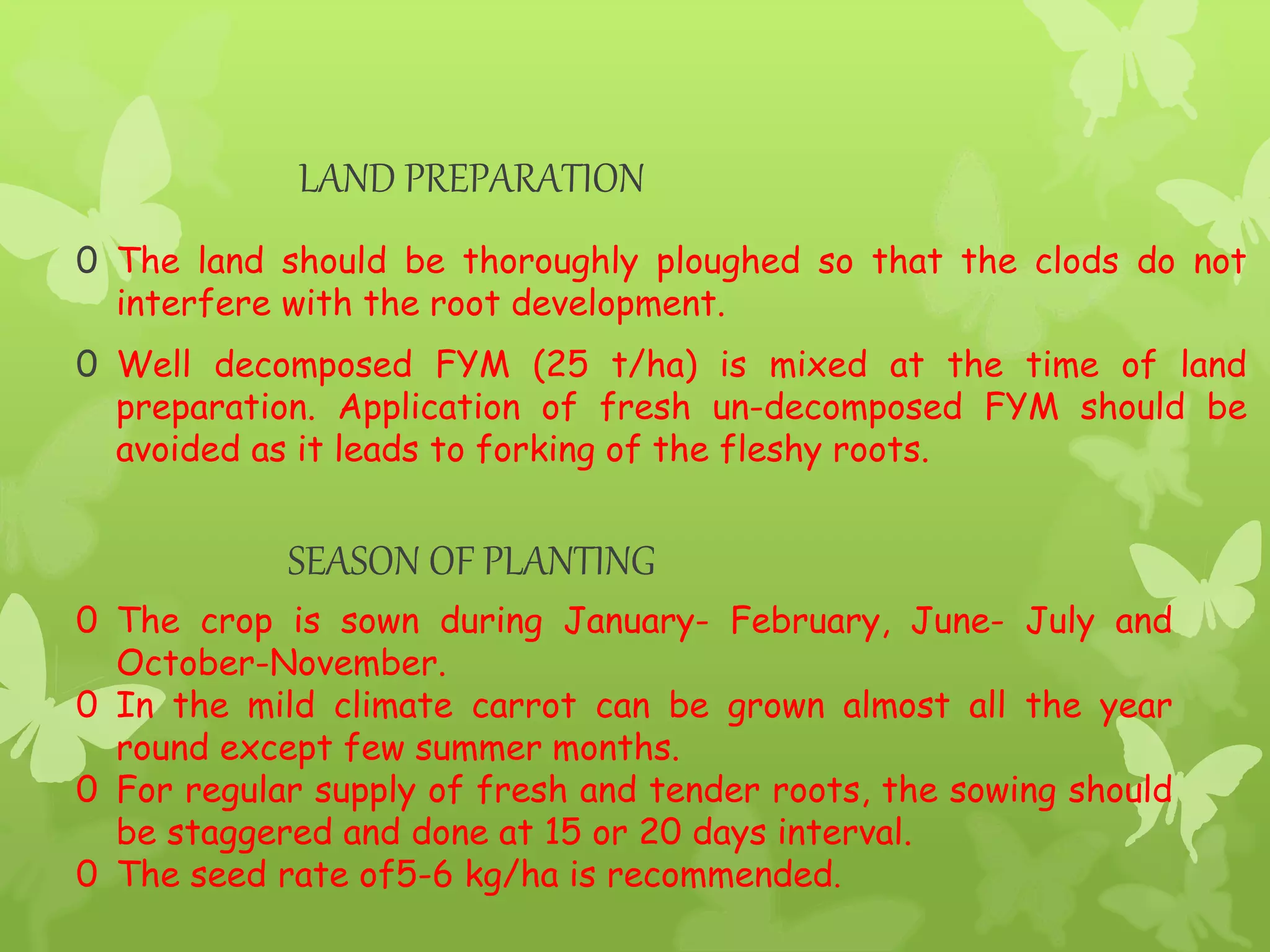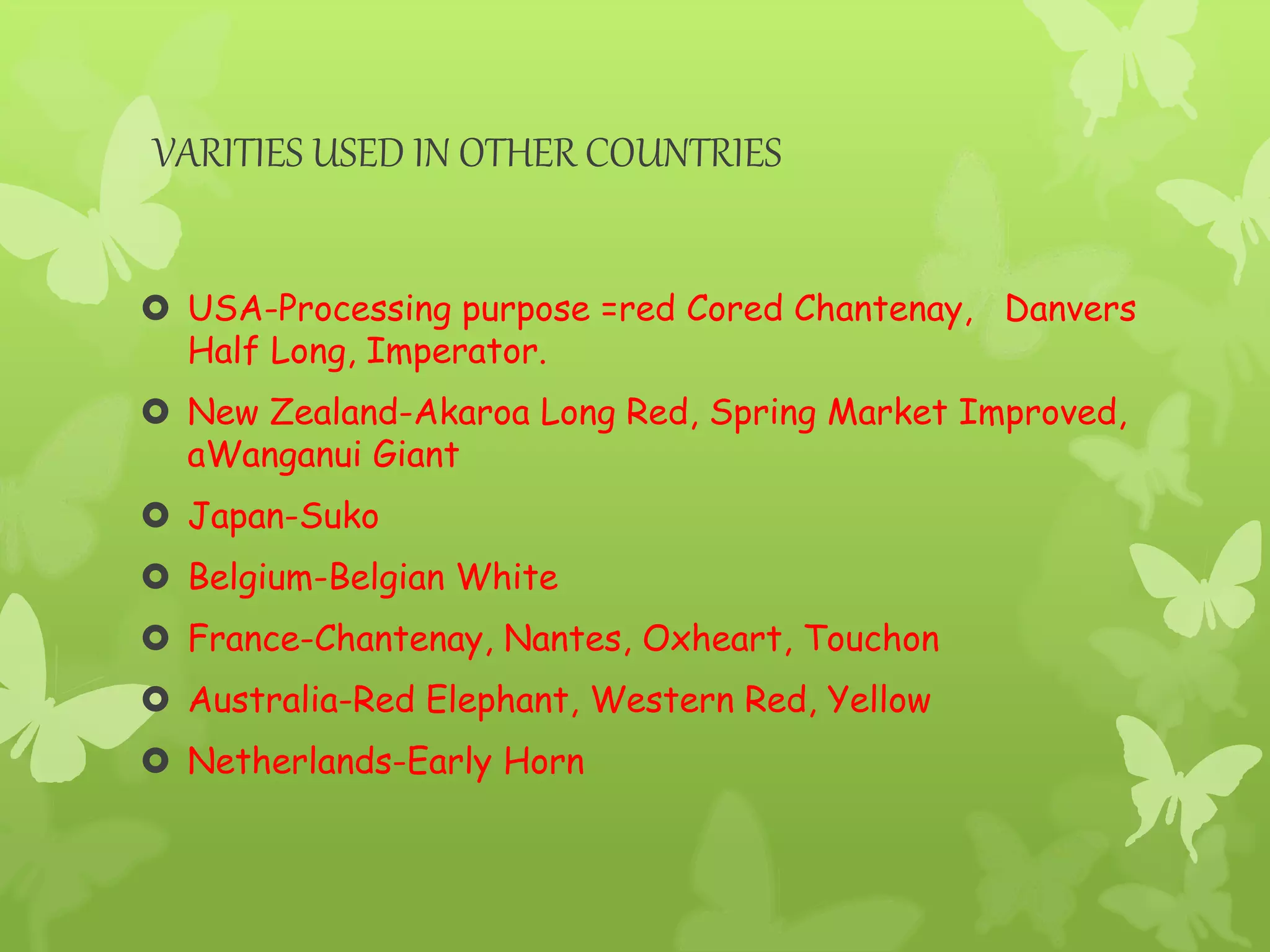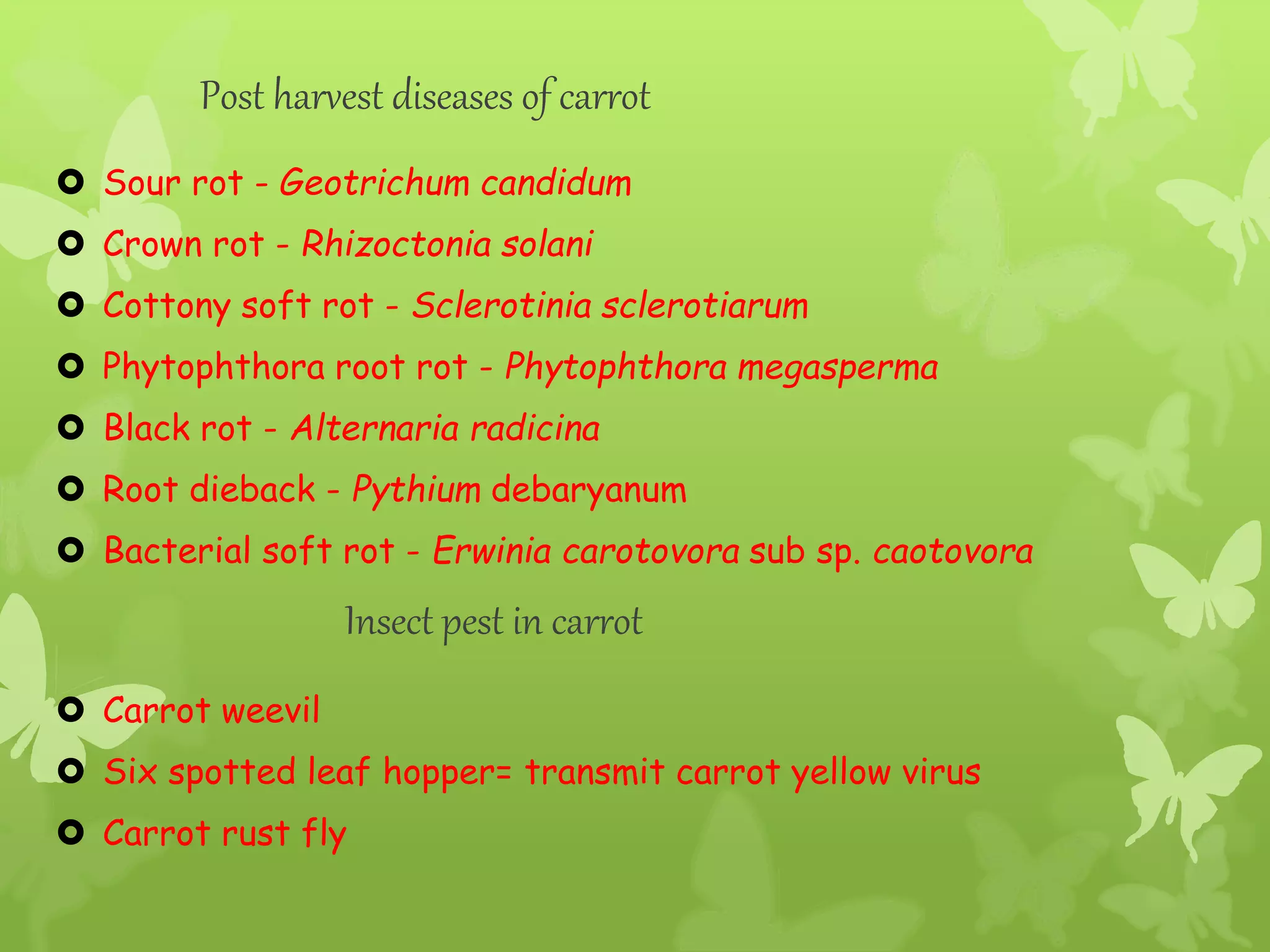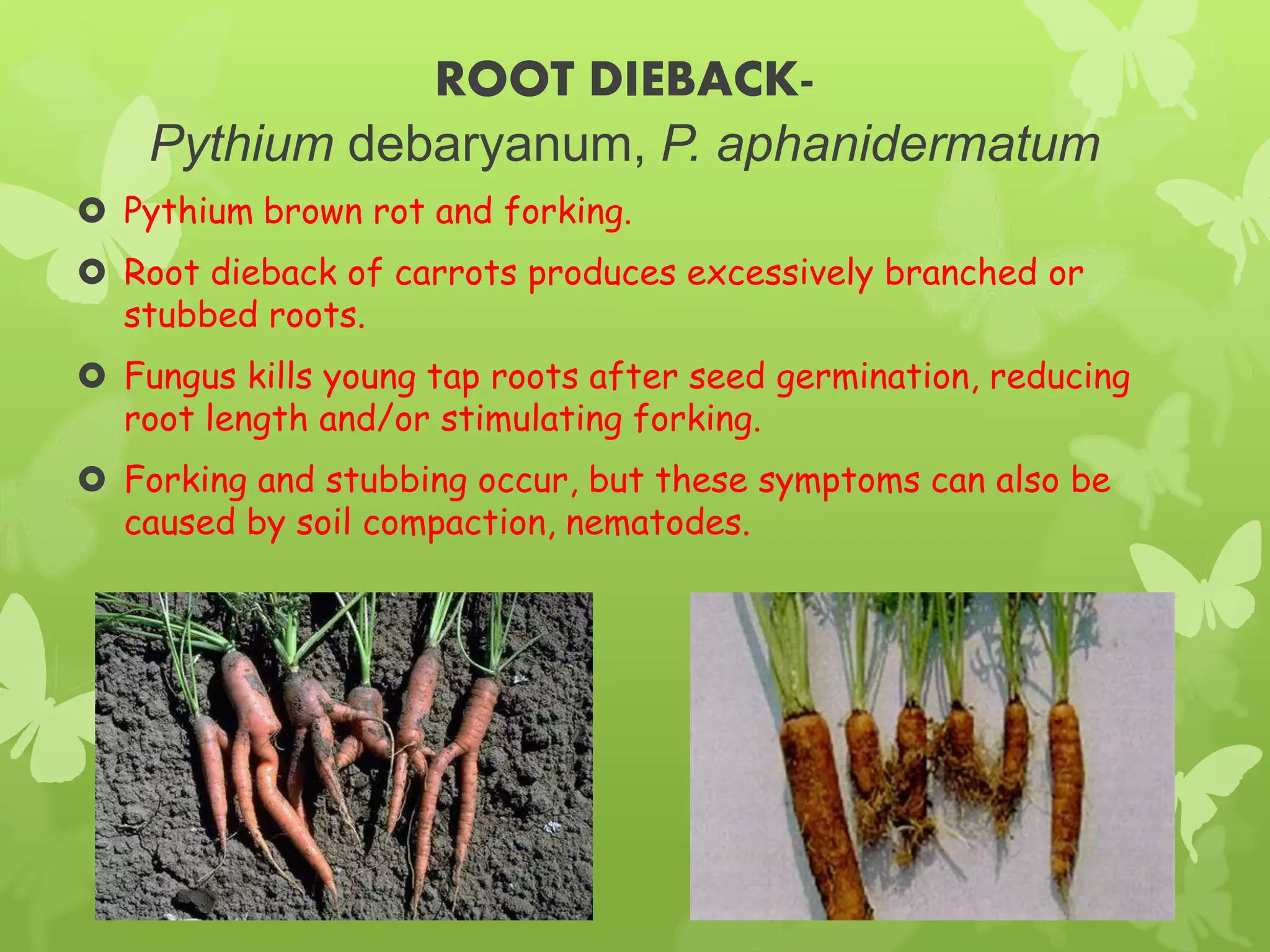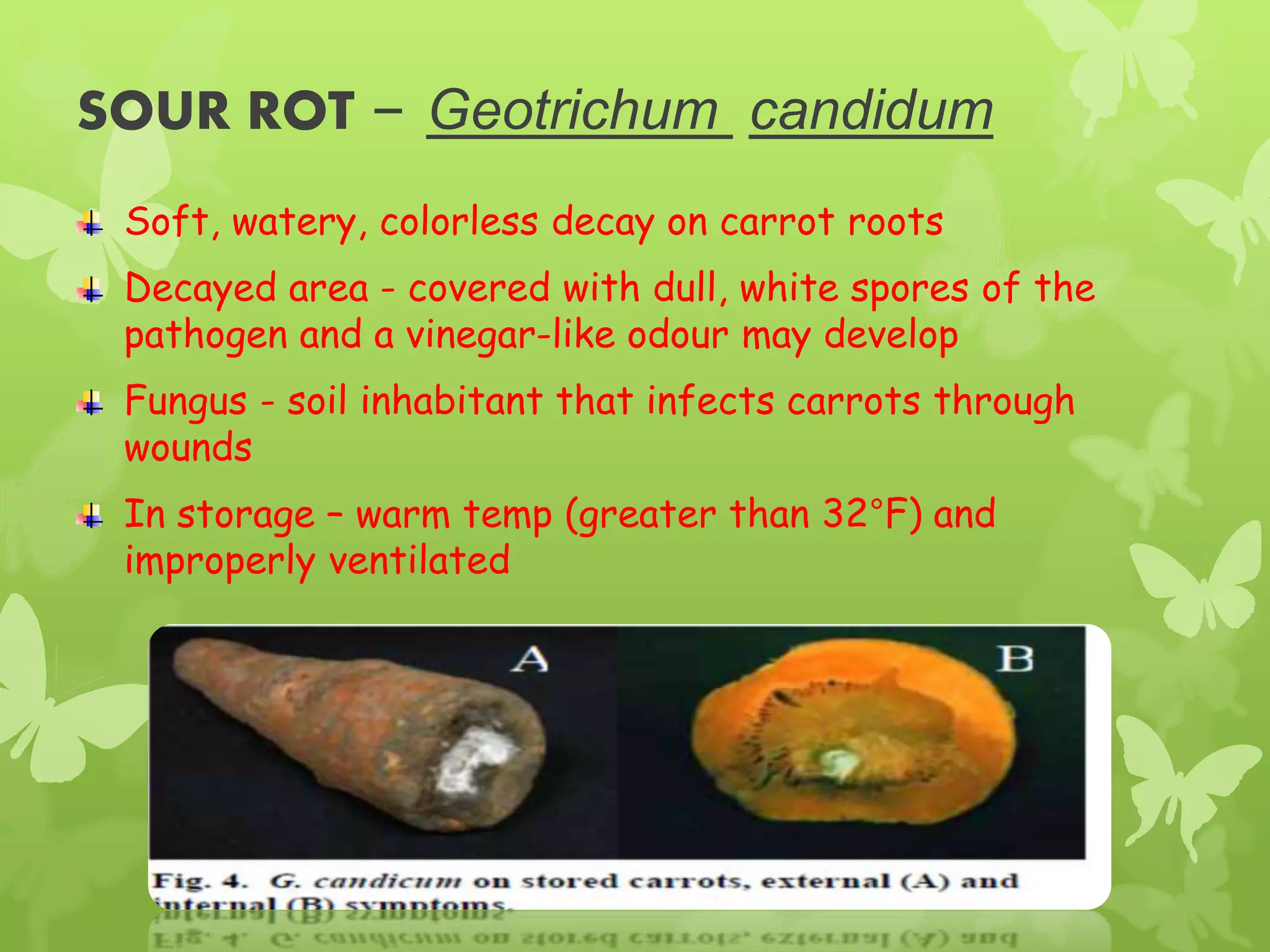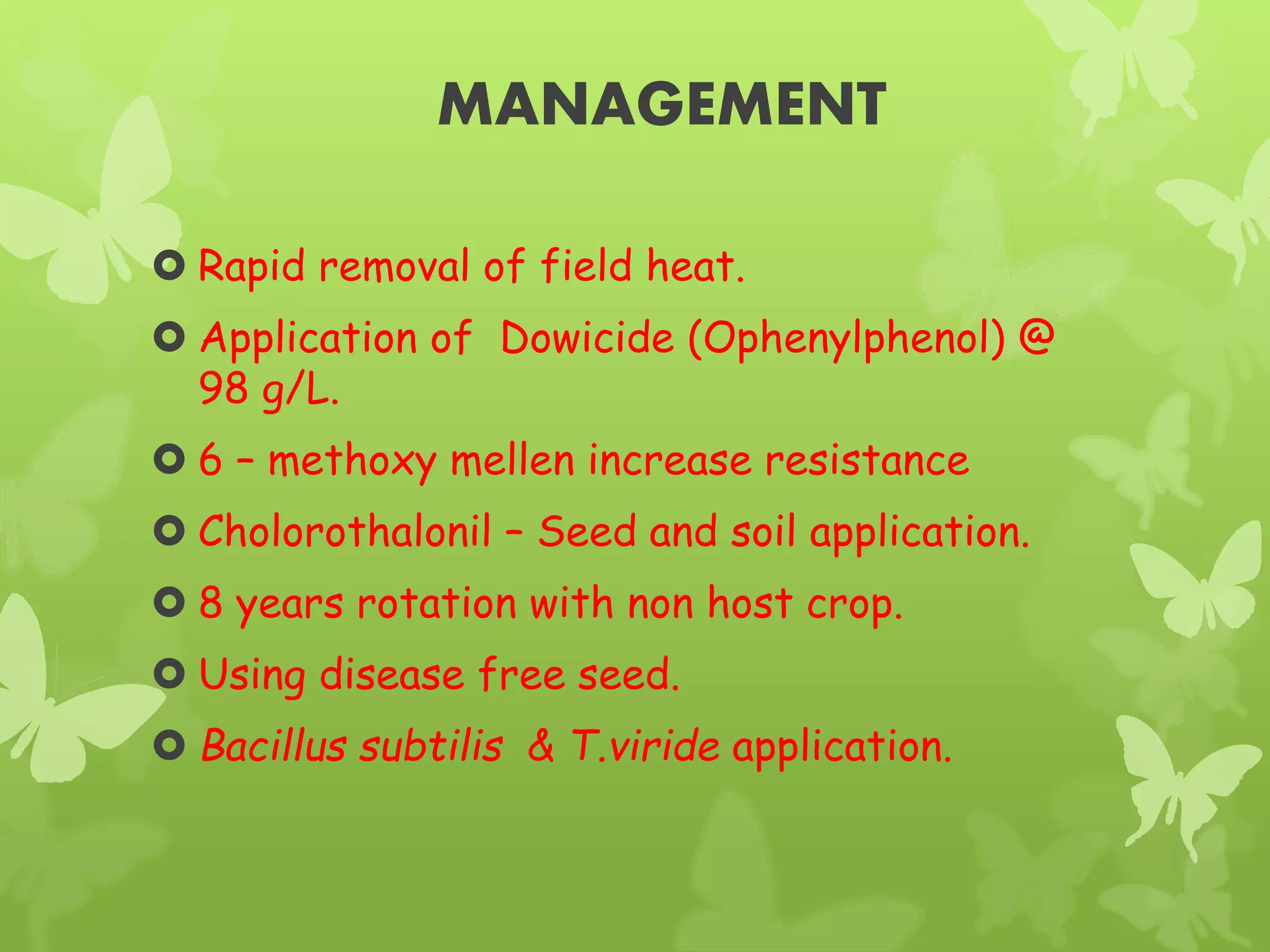This document provides information on the carrot plant. It begins with the botanical name, family, and origin of carrots. It then discusses carrot production in India, with Haryana being the leading producer. The document covers carrot varieties, uses, ideal soil and climate conditions, planting methods, and post-harvest handling. It describes several diseases that affect carrots, including crown rot, cottony soft rot, root dieback, and bacterial soft rot. Control methods are outlined for each disease. The document concludes with information on storage issues like bitterness and phenolic browning.






